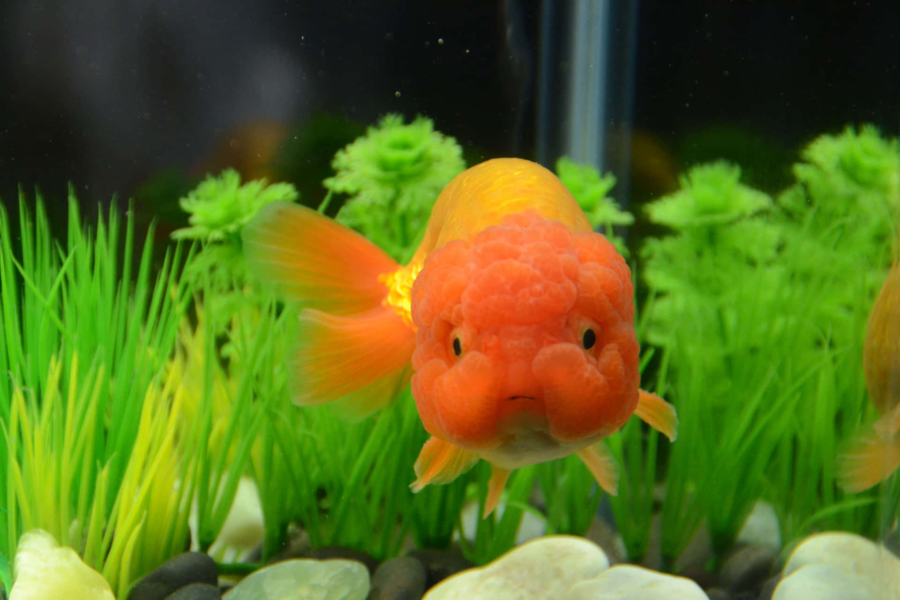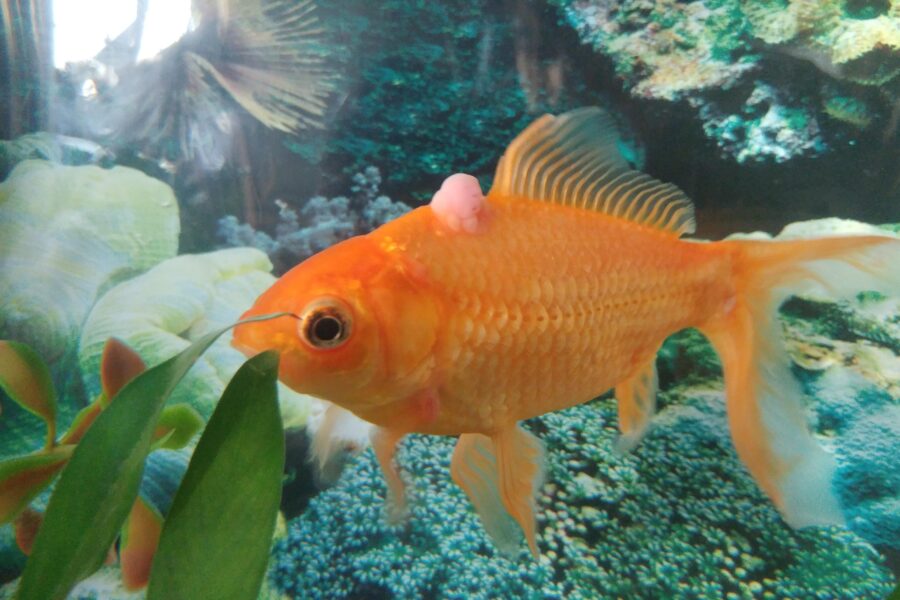
Trichodina in Goldfish might not be the most pleasant topic, but it’s essential knowledge for those who love their finned friends. Picture Trichodina as that unwelcome guest that sees your goldfish as an ideal resort destination. Just like those unannounced family visits, this parasite can wreak havoc if not addressed.
Simply put, Trichodina and goldfish are a mix you’d want to avoid at all costs. Let’s delve into understanding this pesky intruder and how to wave it goodbye after treatment. Ready to shield your shimmering swimmers? Let’s get started!
Understanding Trichodina
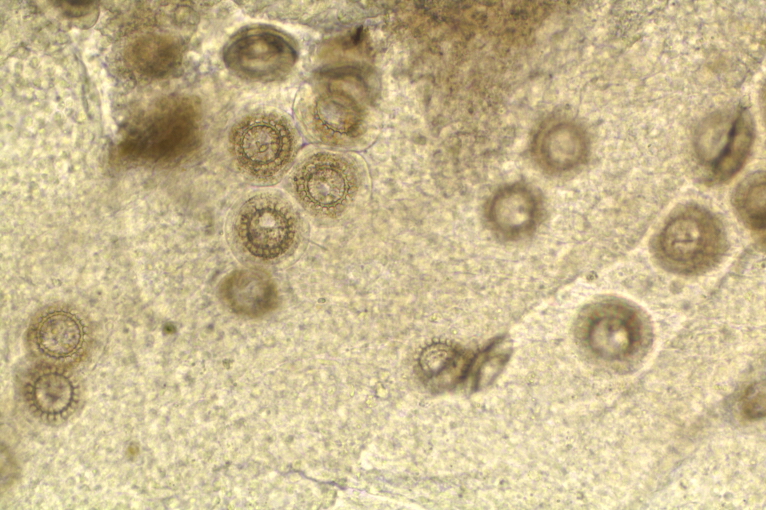
Let’s dive right in and uncover the mysteries surrounding Trichodina. Setting the stage for our watery explorations, we’ll start by defining this critter and discuss how often it affects our goldfish buddies.
Defining Trichodina
Imagine you’re shrunk down to a microscopic, Atomic Betty kind of size. Now, think about having a pizza-shaped blob, constantly spinning like a sneaky little frisbee – yes, that’s Trichodina! In technical terms, Trichodina is a parasitic protozoan. Its favourite party spot? The skin and gills of our poor, unsuspecting goldfish.
How Common Is Trichodina in Goldfish
For Goldie the Goldfish, Trichodina is like that uninvited guest who crashes the party every now and again. It’s not a daily brawl, but it happens. When conditions are right (or, for Goldie, terribly wrong), Trichodina tends to swing by, hitching a ride on the fishy freeway.
Caught the wind of our conversation on Trichodina? Great! Buckle up, as next, we’re going full Sherlock Holmes and inspecting why Trichodina is a potential threat to our goldfish friends.
Why Trichodina is a Threat to Goldfish

Swimming around their bowl, flashing their radiant scales, Goldfish might appear invincible. They’re not, and Trichodina is a buzzkill, a real party crasher. A pesky parasite, Trichodina is a fins-down threat to our gilled buddies.
Impact on Goldfish Health
No tiny creature should wield such havoc! Think of it as a microscopic Hulk. Established as one of the most notorious parasites, Trichodina impacts goldfish health, and boy, it doesn’t go easy. It attacks the skin, fins, and even the gills, playing dirty. It can cause weight loss, decreased appetite, and lethargy. Your formerly vibrant goldfish might look like it barely made it through Bad Fin Day. Surely not the underwater spectacle we want, right?
Signs and Symptoms of Trichodina in Goldfish
Chuck out the detective magnifying glass! No, seriously, you don’t need it. Trichodina isn’t easy to spot in the early stages (that would be too easy, wouldn’t it?). Your goldfish may exhibit abnormal behaviours like flashing (rubbing themselves against things). Gasping at the surface, clamped fins and a body covered in a whitish film are other tell-tale signs. It’s akin to goldfish mimicking a low-budget zombie flick.
Well, brace yourselves dear friends. We have looked into the sinister nature of Trichodina, the Hulk of the parasite world. Up next, we’ll be exploring the fascinating and occasionally outlandish world of prevention. Yes, defense is our best offense, so stick around for that!
Preventing Trichodina in Goldfish

Before you’re knee-deep in medicated fish flakes and googling “goldfish therapy,” let’s discuss prevention. After all, as the old saying goes, “an ounce of prevention is worth a pound of cure.”
Goldfish Care Best Practices
You may be taking the perfect care of your goldfish at home, but that doesn’t make you immune to Trichodina. My dear fish enthusiast, Trichodina is like that uninvited guest who shows up at your party, eats all your snacks and leaves a mess for you to clean up. Nevertheless, maintaining a clean and healthy tank environment is a good start to keep this annoying guest away.
Always ensure your goldfish enjoys a balanced diet. This helps maintain a strong immune system, making it harder for Trichodina to catch them napping. Regular water changes and tank cleanliness also keep the likelihood of an infestation lower. And while we’re at it, avoid overcrowding your tank. It’s not a goldfish party where everyone’s welcome – less is more when it comes to tank mates.
Environment Maintenance for Goldfish
Think of your goldfish’s environment like your own living room. You wouldn’t want to chill where there’s dirt or unwanted gunk, would you? Maintaining the water quality in your goldfish’s tank is critical in ensuring a Trichodina-free environment.
Check and maintain optimal pH levels, and monitor for any sudden shifts in temperature. Regularly test for ammonia, nitrites, and nitrates. A dirty tank is Trichodina’s favorite stomping ground so, remember to clean your tank regularly. Don’t forget to disinfect any new plants or decor before adding them into your humble fish’s abode.
We’ve covered how to keep Trichodina at bay, but what if your fishy friend already has it? Getting a diagnosis is your next step. The sooner you realize your goldfish is under the weather, the sooner you can start treatment. Stay tuned for how to spot these signs in the next section. Trichodina, we’re onto you!
Diagnosing Trichodina in Goldfish
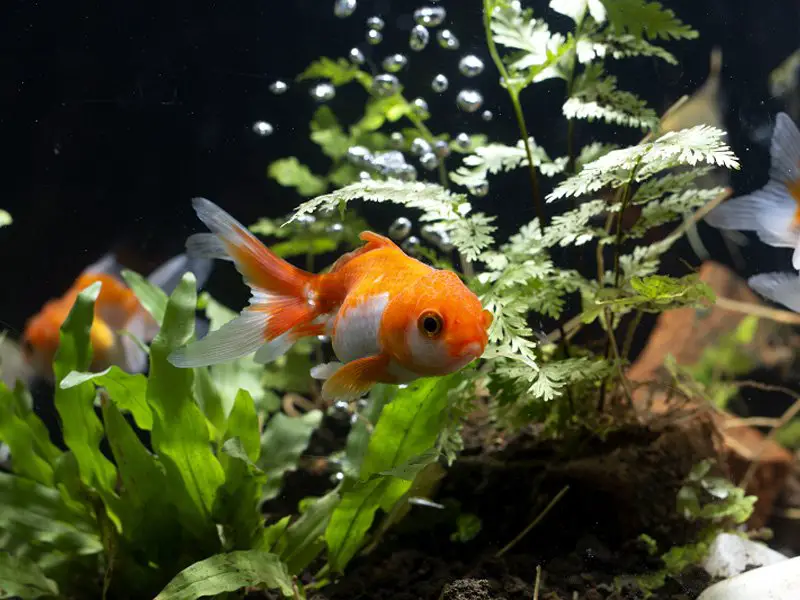
Ready for some detective work? We’re diving into how to diagnose Trichodina. Because remember, Trichodina isn’t wearing a signboard. It’s a silent, sneaky foe.
Professional Diagnosis
First and foremost, professional help is gold standard. If you see your little swimmer acting weird, consider running to your nearest fish vet. Don’t shy away, yes, fish vets are a thing! What do they do? They may use a sample from the fish’s skin or gills and examine under a microscope. It’s like CSI but for your fish!
Here’s the catch. Every microorganism including Trichodina, has its unique dance move. Yes, they groove too! And these specific dance moves, called ‘trophonts’, can help the vet identify Trichodina. It’s all in the wiggle.
Home-Based Tests for Trichodina
Afraid of running to the vet? Understandable. But can you carry out tests at home? Absolutely! You’ll need a microscope for one – your private science lab is getting cooler, right? And, of course, a sample from the infected area. A side note though, this can stress your fishes a bit.
Look for those unique dance moves we talked about. This might be a curveball if you’re not into microorganisms. But hey! Why not expand your merit?
Whew! You’ve hung on really tight so far. After this deep dive into diagnosing Trichodina, let’s come up for some air. Ready for the next phase? Let’s talk about the ray of hope – treatment for Trichodina. But that’s a story for another section. Stay tuned!
Treatment for Trichodina in Goldfish
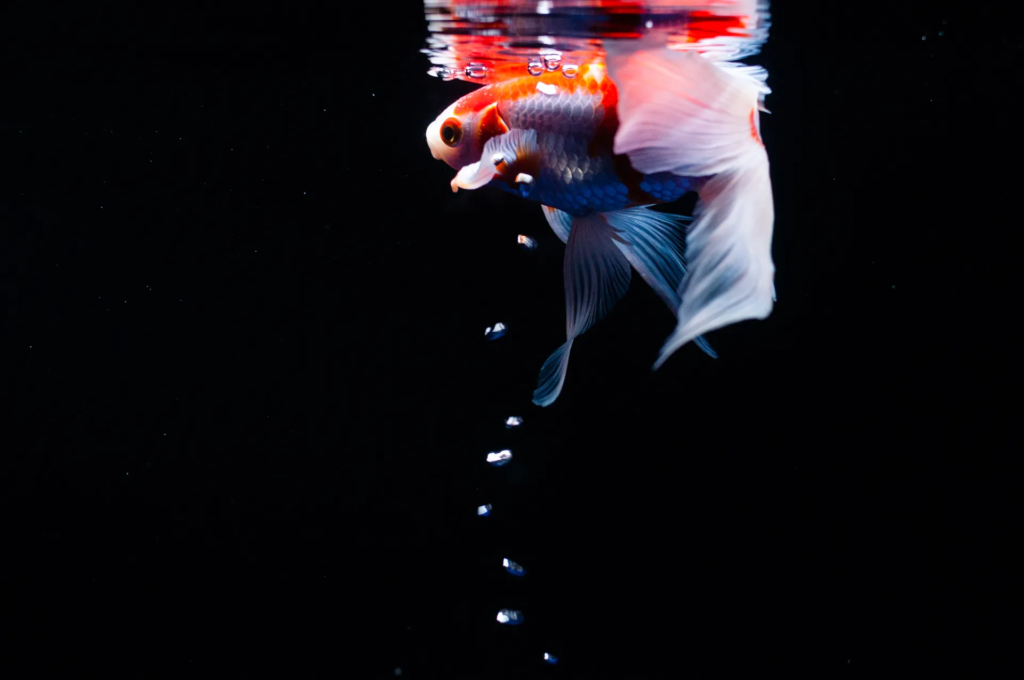
Picture this, your goldfish has been diagnosed with Trichodina. It’s like finding Waldo on a page full of candy-stripes. You’re upset and annoyed. But hey, don’t sweat it, champ. We have few practical solutions lined up for you. Remember, every problem has a solution. So, let’s explore the remedies, shall we?
Chemical Treatments of Trichodina in Goldfish
First off, your vet might suggest going the ‘Breaking Bad’ route. Nope, you ain’t cooking meth. We’re talking about using chemicals treatments. They’re effective, quick, and can make your goldfish do the happy swim again. Chemicals like Formalin, Malachite green, or Methylene blue may come in handy. However, they must be used with caution. We don’t want to fry our little swimmers now, do we? So, remember to follow the dosage instructions meticulously.
Shortly, we will discuss an approach that won’t make you feel like a chemist. Keep reading to learn about natural treatments for Trichodina.
Natural Treatments and Remedies
If you’re more of a ‘Mother Earth’ than a ‘Mad Scientist’, worry not. There are several natural options available. Regularly changing the tank water, upping the water temperature slightly, or introducing salt into the fish’s environment can be effective remedies. They’re like yoga for your fish – relaxing and healing.
Be patient, though. Natural treatments often take longer to show results compared to their chemical counterparts. But worry not. Fishes are fighters. Stronger than Rocky, I bet!
You’ve bravely stood your ground against Trichodina thus far. But the struggle isn’t over yet. Up next, we’ll walk you through the recovery period. Because, like a wise goldfish once said, “Prevention is better than cure.” Or was it a human? Can’t remember.
Anyway, let’s float on to the next section on how to monitor your golden warriors after the Trichodina battle.
Maintaining Goldfish Health Post-Treatment
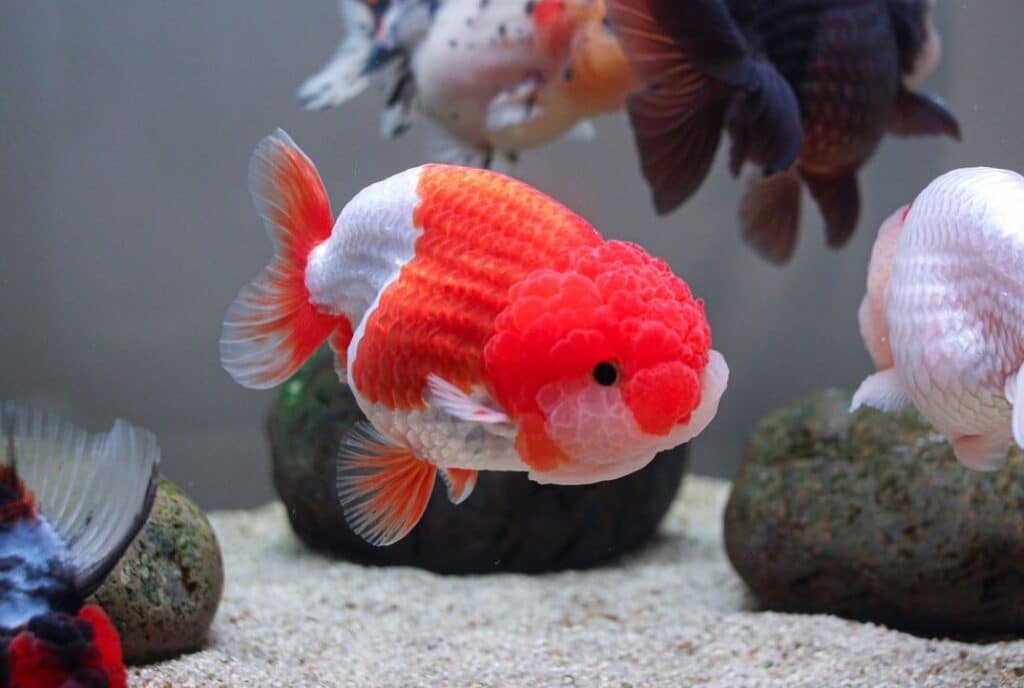
So, your goldy has swam out of the murky waters of Trichodina infection. Yay! But hey, keep that confetti in the box just for a bit. There are some important post-care steps to consider. This section covers how to keep your aquatic jewel healthy and the sneaky Trichodina at bay.
Monitoring for Re-infestation
First things first – Trichodina is like that annoying ex. Sure, you thought you left them back in 2010, but they pop up every now and then, uninvited. Same with Trichodina. Re-infestation is common, so get your fins on constant vigil mode. One can easily do this by checking for signs of distress in the fish, such as erratic swimming, lack of appetite, or that uncharacteristic “scratch-me-on-the-rocks” routine.
As they say, awareness leads to early detection, and early detection leads to a happy goldfish (and goldfish parent).
Health Support for Recovering Goldfish
Goldfish – they may not be the philosophers of the depths, but they sure are survivors! Post-Trichodina, it is essential to provide health support. Like giving a boogie-woogie boost to their immune system. This often includes maintaining great water quality, a balanced diet, and just a chunk of love from your side.
Wrap Up
In the murky sea of goldfish parasites, Trichodina looms as an impending threat. Its ubiquity and influence on fish health make it a fascinatingly nasty character, often resulting in unwanted stress and discomfort for your scale-clad buddies. Marrying action with awareness, we’ve explored professional and home-based diagnosis techniques, and heralded the importance of habitual environmental maintenance.
Venturing beyond diagnosis, don’t be disheartened; we’ve tackled effective treatments, both chemical and natural. Remember, the fight doesn’t end there. In the post-treatment phase, we stress the necessity of monitoring for re-infestation, underpinned by sustained health support for your recovering goldfish. In the world of fishkeeping, an ounce of prevention is worth a pound of cure, ensuring a more Trichodina-free future!
Frequently Asked Questions (FAQ)
Question: What is Trichodina?
Answer: Trichodina is a type of parasite that targets aquatic animals, particularly goldfish. It can impact the health of the fish, leading to various symptoms and issues if left untreated.
Question: How do I know if my goldfish is affected by Trichodina?
Answer: Look for signs such as unsteadiness, abnormal spinning or tumbling, faintness or loss of color, clamping of fins, excessive mucus production, and unusual scratching against objects.
Question: Can I prevent Trichodina?
Answer: Yes, by following proper goldfish care and maintaining a clean and healthy living environment for your goldfish, you can prevent Trichodina infestations.
Question: How is Trichodina diagnosed?
Answer: Diagnosis of Trichodina can be professionally done by a vet or by using home-based tests that examine the goldfish’s skin and gill samples.
Question: What are the treatment options?
Answer: There are several treatment options for Trichodina, including chemical treatments and natural remedies.
Question: How to prevent re-infestation of Trichodina?
Answer: Maintain goldfish health post-treatment by keeping a close eye on them for any abnormalities, regularly cleaning their living environment, and providing ongoing health support.
Question: Are there any personal experiences of combating Trichodina?
Answer: Yes, many goldfish owners and aquarists have shared their experiences, challenges, and outcomes of dealing with Trichodina.


